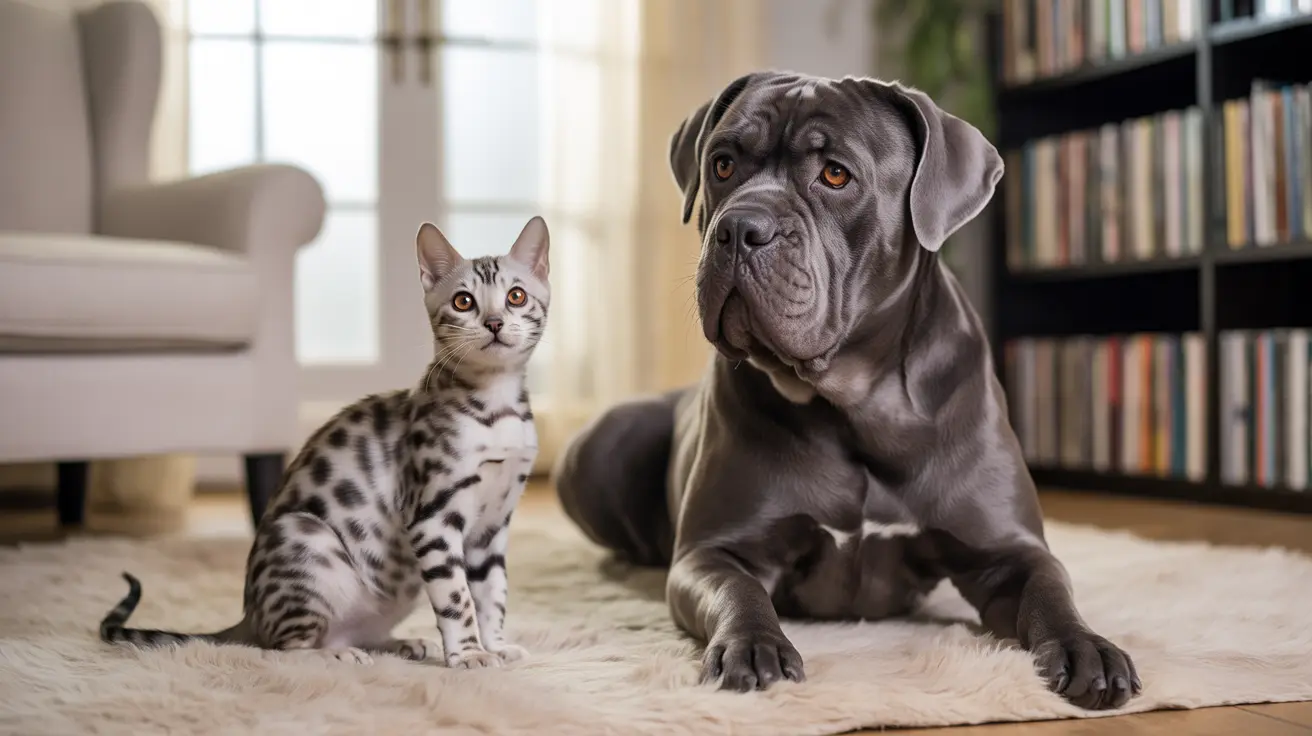If you've ever wondered whether cats and dogs can mate and produce offspring, you're not alone. This common question arises frequently among pet owners, especially those with both species living under one roof. Let's explore the scientific facts behind why cats and dogs cannot mate or produce hybrid offspring, despite sometimes displaying behaviors that might suggest otherwise.
Understanding the biological impossibility of cat-dog breeding isn't just about satisfying curiosity—it's essential knowledge for responsible pet ownership and dispelling persistent myths that circulate online and in popular culture.
The Fundamental Genetic Barrier
At the most basic level, cats and dogs cannot mate successfully because they have vastly different genetic makeups. Cats have 38 chromosomes (19 pairs), while dogs possess 78 chromosomes (39 pairs). This fundamental difference makes it impossible for their genetic material to combine and form viable offspring.
Think of chromosomes like puzzle pieces—they need to match perfectly to create a complete picture. Cat and dog chromosomes are simply incompatible pieces from entirely different puzzles.
Anatomical and Physiological Differences
Beyond genetics, cats and dogs have completely different reproductive anatomies. Male cats have specially adapted reproductive organs with barbed structures that trigger ovulation in female cats—a feature that would be harmful to female dogs. Similarly, the reproductive tract of female cats differs significantly from that of female dogs.
These physical incompatibilities make successful mating physically impossible, even if the animals attempt to engage in mating behavior.
Understanding Mounting Behavior
When pet owners observe their dog mounting a cat (or vice versa), it's important to understand that this behavior isn't sexual in nature. Instead, it typically indicates:
- Dominance display
- Playful behavior
- Excitement or stress
- Hormonal responses (especially in unneutered animals)
Reproductive Cycles and Mating Signals
Cats and dogs have evolved entirely different reproductive cycles and mating signals. Female dogs come into heat approximately twice a year, while female cats are induced ovulators, meaning they only release eggs after mating. These species cannot recognize or respond to each other's mating signals, making natural breeding behavior between them impossible.
Species Recognition and Evolution
Cats and dogs have evolved along completely separate evolutionary paths for millions of years. As a result, they have developed distinct:
- Mating rituals
- Physical characteristics
- Behavioral patterns
- Chemical signals (pheromones)
These differences ensure that cats and dogs naturally recognize members of their own species as potential mates, not members of other species.
Frequently Asked Questions
Can cats and dogs mate and produce offspring?
No, cats and dogs cannot mate or produce offspring. Their genetic, anatomical, and physiological differences make it biologically impossible for them to breed successfully.
Why is it biologically impossible for cats and dogs to breed together?
The primary reason is their vastly different chromosome counts (38 for cats vs. 78 for dogs) and incompatible reproductive anatomies. These differences make fertilization impossible.
What does it mean when my dog mounts my cat—are they trying to mate?
No, mounting behavior between cats and dogs is not sexual. It's typically a display of dominance, play, or excitement. This behavior should be discouraged to prevent stress or injury.
Are there any known hybrids between cats and dogs, like "kuppies"?
No, there are no documented cases of cat-dog hybrids. Terms like "kuppies" or "cattogs" are purely fictional and have no basis in scientific reality.
How can I prevent my dog from mounting my cat to avoid stress or injury?
To prevent mounting behavior:
- Ensure both pets are spayed/neutered
- Redirect the behavior with training
- Provide adequate exercise and mental stimulation
- Separate pets when unsupervised if necessary
- Consult a veterinarian or animal behaviorist for persistent issues
Understanding these biological facts helps pet owners provide better care for their animals while appreciating the unique characteristics that make each species special in its own right.






